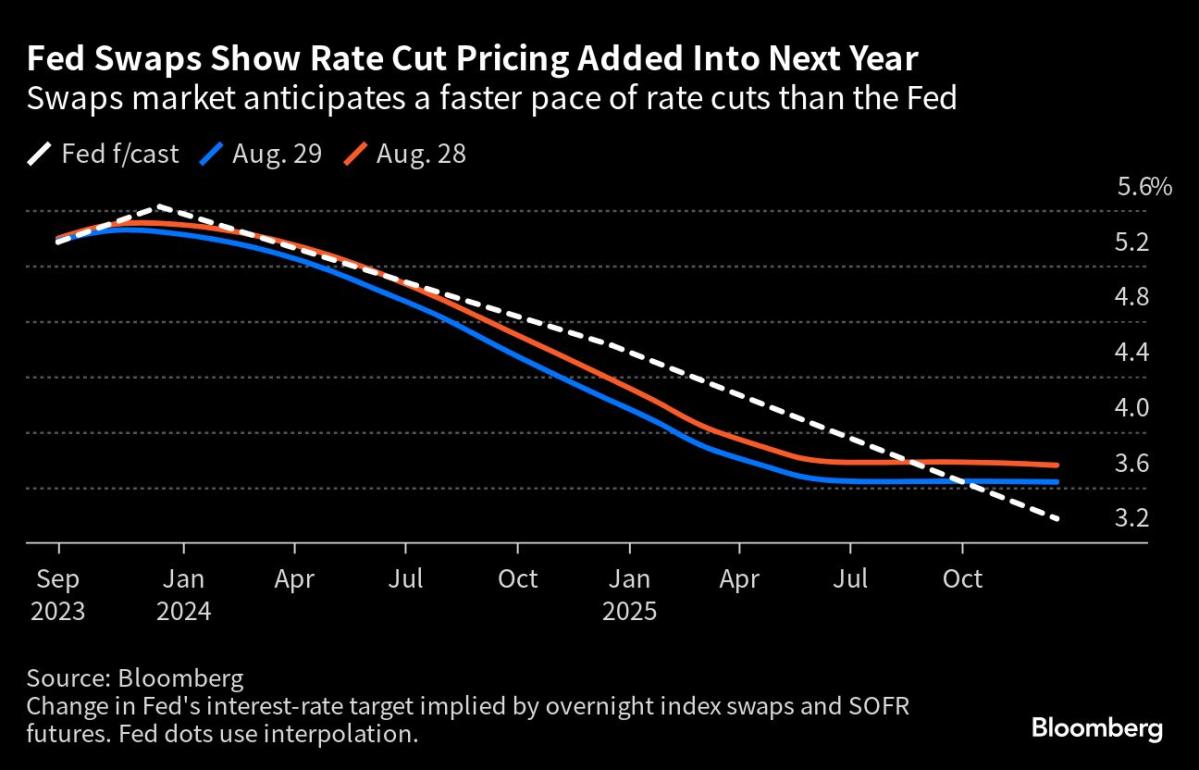Treasury yields reach new decade highs in Asia as traders become concerned about the duration of elevated interest rates, causing a dampening effect on stocks, particularly in China, even as some markets attempt to rebound.
Surging U.S. Treasury yields are causing concern among investors as they wonder how much it will impact the rally in stocks and speculative assets, with the S&P 500, technology sector, bitcoin, and high-growth names all experiencing losses; rising rates are making it more difficult for borrowers and increasing the appeal of risk-free Treasury yields.
Government bonds rallied as yields on longer-dated Treasurys retreated, while stock indexes closed mixed for the week and Bitcoin declined, with oil prices pushing higher and overseas stocks declining.
The recent sell-off in US bonds has led to a rise in the yield-to-duration ratio, indicating that yields would need to increase significantly to generate losses, providing a potential floor for the struggling market.
US job openings fell to the lowest level in nearly 2.5 years in July, indicating a gradual slowdown in the labor market and increasing expectations that the Federal Reserve will not raise interest rates next month.
European bonds and stocks fell as inflation data suggested that inflation in the euro region may not be fully subsiding, while utilities led the decline in the Stoxx Europe 600 and the German and Spanish inflation data complicated the outlook for European policy makers.
The US dollar dropped to a two-week low against the euro and other currencies after data revealed lower than expected private payroll growth in August, leading to speculation that the Federal Reserve will halt interest rate increases.
U.S. Treasury yields rise as investors await jobs report for insight into the economy and Fed's monetary policy decisions.
The euro rose against the dollar and euro zone bond yields fell after US unemployment rate increased, suggesting the Federal Reserve may be done with interest rate hikes.
U.S. stock futures decline as bond yields rise despite weak economic news from China and Europe.
Treasury yields rose as traders priced in higher odds of a Federal Reserve interest-rate increase this year after a stronger-than-anticipated gauge of service-sector activity.
The yield on the 10-year Treasury note is predicted to decrease significantly for the remainder of this year and in 2024, as economists anticipate the Federal Reserve to loosen its monetary policy and inflation to fall.
U.S. stocks fell and Treasury yields surged ahead of the Federal Reserve's interest rate decision, while Instacart shares surged 12% on their first day of trading on the Nasdaq.
Treasury yields rise and stocks fall as traders anticipate longer-lasting higher rates to prevent inflation, while Brent oil briefly surpasses $95 a barrel; the Federal Reserve's decision on interest rates is eagerly awaited by investors.
U.S. equities fell as the Fed began its policy meeting and the 10-year Treasury yield reached a 16-year high, with Walt Disney shares dropping after announcing increased spending on theme parks and cruises, and Cboe Global Markets shares rising following a CEO change.
U.S. Treasury yields dip slightly as investors await the Federal Reserve's interest rate decision and guidance, while the 10-year yield remains near 16-year highs.
The 10-year Treasury yield reaches its highest level since November 2007 as investors anticipate the Federal Reserve's rate announcement, despite expectations that the Fed will maintain its current rate target.
The reduced volatility in the US Treasury market has supported risk assets like cryptocurrencies and stocks, with the MOVE index falling to its lowest level since the Fed began raising rates, providing a positive outcome for assets such as bitcoin.
World stocks fell for a fifth straight session and the dollar reached its highest level since March as Treasury yields rose, signaling concerns over higher interest rates and slower economic growth.
Stocks fell for a third consecutive day as Treasury yields continued to rise, causing pessimism in the market and leading to declines in major indexes.
